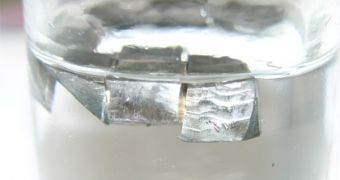There is apparently such a thing as building too thin of a battery. Researchers in the United States say that they were recently able to find the minimum miniaturization level at which lithium-based batteries can operate.
In other words, the group found the limit for how small these power-storage devices can be made. The study involved experts from the US National Institute of Standards and Technology (NIST), the University of Maryland in College Park, and the DOE Sandia National Laboratories (SNL).
The investigation was conducted on nanowire batteries. The group constructed a series of electrolyte layers of various thickness, which the goal of finding the thinnest version of this material that is still able to function efficiently.
Studies such as this one are extremely important for future innovations, which all rely on the assumption that tony power sources capable of delivering great amounts of power will be made available soon. That may turn out not to be the case, at least not with lithium batteries.
Details of the work appear in a paper entitled “Electrolyte stability determines scaling limits for solid-state 3D Li-ion batteries,” which is published in a recent issue of the scientific journal Nano Letters.
One of the main applications where battery size is key is in the field of microelectromechanical machine (MEMS) construction. Researchers have been trying to develop autonomous versions of these devices for years, but power sources are still a problem.
Due to their reduced size (diameters rarely exceeds a few tens of a micrometer), MEMS require small, long-lived, fast-charging battery as power sources. Current battery technologies only allow scientists to create MEMS that are around one millimeter across, much of which is occupied by the power source.
The batteries they NIST group created are actually nanowires about 7 micrometers long and 800 nanometers wide. They were developed in the lab of researcher Alec Talin. His group found that electrolyte films used by the batteries cannot be thinner than 200 nanometers.
“What isn’t clear is exactly why the electrolyte breaks down. But what is clear is that we need to develop a new electrolyte if we are going to construct smaller batteries,” the scientist says.
“The predominant material, LiPON, just won’t work at the thicknesses necessary to make practical high-energy-density rechargeable batteries for autonomous MEMS,” Talin concludes.

 14 DAY TRIAL //
14 DAY TRIAL //